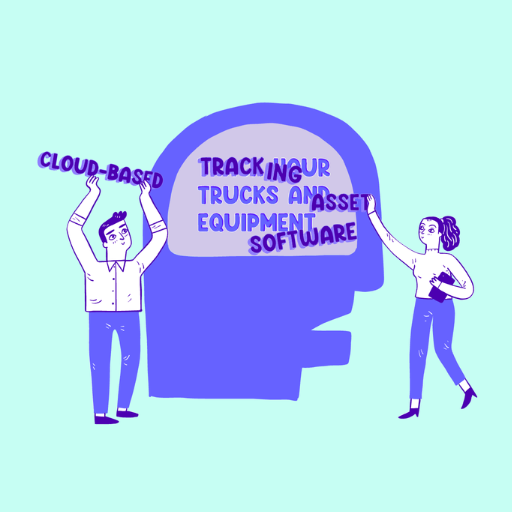
Why Product Naming Matters More Than You Think
A product name is the first handshake with a customer. It sets the tone, signals value, and often decides whether someone clicks, remembers, or shares. Names shape perception in three fast ways: meaning, memorability, and differentiation.
- Meaning: A good name shortcuts the conversation. It signals a category or benefit so buyers can quickly decide if it’s relevant.
- Memorability: Short, distinctive names travel. They survive noisy feeds and halting voicemail messages.
- Differentiation: Your name either blends into the category or stakes ground. Me-too names make buying harder. Distinctive names make you easier to find and defend.
Names also affect discovery and economics. Hard-to-spell names reduce organic search traffic. Names that require heavy education raise marketing costs. And names that don’t fit your brand architecture create friction as you scale—forcing renames, confusing sales teams, and diluting value. Naming is not decoration; it’s a strategy.
The Product Naming Process: From Blank Page to Breakthrough
Professional naming follows a discipline. Skip steps and you risk a workable name that fails in the market. Here’s a practical sequence to move from blank page to cleared, market-ready name.
- Research
Start with a map of the category, competitors, and existing naming patterns. Listen to customers. Collect the language they use to describe problems and outcomes. - Strategy
Translate research into naming criteria tied to your brand pillars, tone, distinctiveness, memorability, international needs, and legal defensibility. - Ideation
Generate widely. Mix descriptive, suggestive names, invented, and experiential options. Quantity unlocks quality. - Filters and Linguistic Checks
Pair the list with pronunciation, spelling, and transliteration checks for priority markets. Look for unintended meanings. - Audience Testing
Run quick qualitative interviews and structured preference tests. Measure recall, perceived fit, and shareability. - Legal and Domain Vetting
Early trademark screening and domain availability checks prevent heartbreak later. Don’t assume a name is free because a domain exists. - Finalize and Plan Rollout
Document naming architecture, messaging, and internal guidance. Align sales and product teams before public launch.
Pitfalls to avoid
- Naming for features instead of the enduring benefit.
- Over-relying on internal preference without buyer input.
- Ignoring linguistic and trademark risk until late in the process.
- Choosing names that don’t scale across future offerings.
Naming Research: What to Know Before You Name
Research is the compass that keeps naming from being guesswork. Focus on three types of insight.
Category and competitor scans
Map naming norms in your space. Are players using alphanumeric codes (Model X), descriptive labels (Expense Tracker), or metaphorical brands (Stripe)? Identify overused words and open sonic territories—places your name can own.
Customer language
Interview buyers early. Ask them to describe the problem in their own words and explain how they’d tell a colleague about a solution. The verbs, metaphors, and pain phrases you hear are naming gold.
Emotional, functional, cultural cues
Decide on the emotional seat the product will occupy. Should it feel authoritative and safe, nimble and clever, or bold and aspirational? Use the Brand Discovery process and the Brand Ladder method to map how the product supports higher-order brand benefits—utility, emotional payoff, identity.
Real Product Naming Examples That Work
Short, simple examples show the rules in action. These public examples illustrate different naming strategies—and why they work.
- Slack — Suggestive + conversational. The word is familiar, easy to say, and carries a metaphor about slack being taken out of work processes. It’s memorable and conversational, which fits the product’s social workplace intent.
- Dropbox — Descriptive + invented compound. It directly describes the utility (a place to “drop” files) while forming an ownable brand name that’s easy to search and spell.
- Stripe — Suggestive + scalable. Short, metaphorical, and flexible. It implies a clean movement and modern infrastructure without boxing the company into a single product.
- Zoom — Simple, active, and memorable. The verb-like name communicates speed and ease—qualities core to a videoconferencing product.
Each of these names is short, category-appropriate, easy to pronounce, and leaves room to expand. That combination reduces friction in adoption and marketing.
Best Product Names: What They Have in Common
Across categories, winning names share patterns:
- Short and sticky: one to three syllables where possible.
- Easy to say and spell: fewer search errors, higher referral rates.
- Distinctive in category: avoids the “-ly” and “cloud” traps when those suffixes dominate.
- Scalable: can stretch across new features and adjacent products.
- Meaningful: either describes function, suggests benefit, or embodies a brand idea.
- Search-friendly: good SEO potential and defensible domain/handle availability.
Naming Strategies and Best Practices
Pick a strategy that aligns with your brand and market goals.
- Descriptive: Clear but often less ownable. Good for utility-led products where truth sells.
- Suggestive: Hints at benefit or feeling. Balances comprehension and brandability.
- Invented: Invented names are highly ownable but require more marketing to explain.
- Metaphorical: Reframes how customers think about a problem. Powerful for category creation.
Connecting names to your brand
Make sure to consider your brand tone of voice as your work through the naming process. For example, a product meant to signal enterprise trust should avoid playful, casual names even if the category trend favors them.
Linguistic and international filters
Test names in priority markets. Check for problematic translations, homophones, and unintended cultural meanings. Make sure the name transliterates cleanly when needed.
Audience testing
Run fast, focused tests. Ask participants to recall names after a short delay. Measure perceived fit, originality, and likelihood to recommend. Use that data to rule in or rule out finalists.
When to Hire a Branding Agency (and What They Do)
Branding agencies bring three things companies often lack internally: an outside-in perspective, rigorous process, and objective selection criteria. They manage ideation, linguistic screening, buyer testing, and early legal checks, all bundled with stakeholder alignment.
Consider hiring an agency when:
- You’re launching at scale or into multiple markets.
- Brand architecture will matter across many products.
- Legal or linguistic complexity is high.
- You lack internal bandwidth for rigorous buyer-testing and legal coordination.
Backstory’s strategic approach
At Backstory Branding, we root naming in buyer validation and strategic alignment, in order to achieve what we call Message Market Fit®. We connect naming choices to brand discovery so names don’t just sound good; they earn resonance with buyers, reduce market friction, and support valuation upside. We design naming projects to align executives, marketing, sales, and client success around a narrative that scales.
Product Naming Services vs. DIY: What You Need to Know
DIY can work for early experiments and quick launches. It’s faster and cheaper up front. But the risks are real: overlooked trademarks, embarrassing translations, and names that don’t resonate with customers. Agencies aren’t free, but there is lower long-term risk and often shorter time-to-adoption.
If you go the DIY route, these are non-negotiable:
- Early trademark screening.
- Domain and social handle checks.
- Customer testing for recall and fit.
- Linguistic checks in priority markets.
Product Naming Guidelines to Keep You Aligned
Treat this as your short checklist:
- Don’t name for today’s feature set—name for enduring benefit.
- Keep it short and easy to spell.
- Avoid me-too category terms and suffix traps.
- Test names with real buyers early and often.
- Run trademark and domain screens before falling in love.
- Ensure the name ladders up to your brand pillars and positioning.
- Check pronunciation and translation in your top markets.
Final Thoughts: Make Your Name Work Harder
A name is a promise and a strategic lever. When it’s built on buyer insight, tested for linguistic and legal safety, and aligned with your brand architecture, it accelerates discovery, shortens sales conversations, and magnifies enterprise value. Naming is a foundational decision—not an afterthought. Invest the time and rigor up front, and your name will pay that investment back in adoption, clarity, and growth.
Need a name that works harder for your brand? Let’s talk.


.png)

.png)
.png)

.png)



.png)








.png)
.png)
.png)

.png)



.png)




.png)







.png)
.png)

.png)
.png)


.png)
.png)


.png)
.png)

.png)
.png)
.png)
.png)